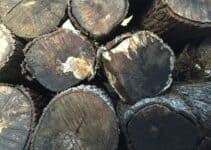As an enthusiast for the quintessential warmth that a log burner offers, I acknowledge the significance of undertaking regular maintenance to preserve its efficiency and safety. A common yet crucial task in this regard is the glass door rope replacement, which, despite seeming like a mere detail, forms an integral part of your log burner’s performance. My personal experience in carrying out a log burner rope replacement has taught me that an occasionally overlooked feature like the door’s seal can have profound implications on the burner’s operation.
Understanding how to change the rope in a log burner door is essential. Over time, the high temperatures and constant use can lead to the deterioration of the rope seal, compelling a need for replacement.
This process is not only about restoring the appliance’s look but more critically, its performance and safety, which I make a priority in my own home. The task involves displacing the aged rope with a new one, thus rectifying any existing air leaks to thwart potential inefficiencies or damages. It’s a feat I’ve mastered over my years of cosy fireside experiences.
With a steadfast approach, the right tools, and a bit of patience, you too can achieve a successful log burner glass door repair. In doing so, you will ensure your log burner continues to function at its paramount, providing you with unwavering warmth and comfort.
Understanding the Importance of a Secure Rope Seal
As a conscientious homeowner with a log burner, I understand that maintaining an effective seal on my log burner door is vital for its efficiency and safety. Replacing the rope seal annually is a task that I cannot afford to overlook, as it directly affects the performance of my log burner. The integrity of the seal ensures that the air regulation within the firebox is optimal, preventing both over-firing and air leaks that can have detrimental effects on the log burner’s function and longevity.
Whilst carrying out a log burner door rope replacement, I’m aware that an improperly sealed door can lead to an overabundance of air entering the firebox. This not only heightens the risk of over-firing but can also cause the glass to blacken—a clear sign that it’s time for replacing rope in the log burner door. A flawless rope seal not only ensures efficient fuel combustion but also significantly curtails the risk of unnecessary soot accumulation on the stove glass.
I’ve noticed, particularly in some European brand log burners, that designed gaps play a pivotal role in the airwash systems. It is crucial during a log burner door rope repair not to obstruct these gaps inadvertently. They’re essential for maintaining clear glass and effective combustion, and they are a testament to the attention to detail required when undertaking a rope seal replacement.
| Signs of Wear | Consequence | Recommended Action |
|---|---|---|
| Excessive soot on glass | Reduced visibility and potential over-firing | Inspect and replace rope seal |
| Visible fraying or gaps in the rope seal | Increased air ingress, inefficiency | Immediate rope replacement |
| Tar formation around the seal | Indication of air leak and incomplete combustion | Clean area and replace the rope seal |
When addressing concerns about efficiency and safety, replacing my log burner’s door rope annually has become a standard practice, especially if signs of excessive burning or tar formation on the stove glass become apparent. This simple but significant maintenance helps ensure the longevity and optimal performance of the log burner, cementing its role as the heart of my cosy, warm home through the colder months.
Preparing for Your Glass Door Rope Replacement Project
Embarking on a rope replacement for the glass door in your log burner requires meticulous preparation to ensure a successful outcome. The journey begins by selecting the ideal type of rope, which is characteristically a soft-weave fibreglass known for its resilience to high temperatures.
As I navigate the replacement process, it is imperative to identify the correct rope diameter tailored for my specific log burner make. This critical step cannot be overlooked, as utilising rope that is either too slender or too plump risks compromising the intended seal. Sourcing the correct measurements can be effortlessly done through consulting the stove’s manual or directly contacting the manufacturer.
- Determine the rope type: High-temperature resistant, soft-weave fibreglass.
- Consult the log burner’s manual or manufacturer for diameter specifications.
| Log Burner Model | Required Diameter | Type of Fibreglass Rope |
|---|---|---|
| Model A100 | 10mm | Soft-weave, High-temperature |
| Model B200 | 12mm | Soft-weave, High-temperature |
| Model C300 | 15mm | Soft-weave, High-temperature |
This preparation not only sets the stage for a seamless installation but also acts as a safeguard against future log burner inefficiencies. It is this foresight that positions us to adeptly carry out a rope replacement as precise as if it were performed by a professional.
Furthermore, I am reminded of the indispensable role patience plays in this procedure, as it’s paramount to ensure the log burner is completely cooled before I commence any work. This not only pertains to the safety aspect but also facilitates an easier manipulation of materials. Now, with the correct type of rope and the specific measurements at hand, my confidence swells in the knowledge that the endeavor ahead is well planned.
How to Replace the Rope in the Glass Door of a Log Burner
Embarking on a glass door rope replacement project for your log burner? It’s a doable task for any motivated DIY enthusiast. By carefully following these methods, you’ll ensure a proper seal and enhance the efficiency of your log burner. Let’s walk through the steps to accomplish this vital maintenance endeavour.
Removal of the Stove Door
The initial step in log burner rope replacement starts with the removal of the stove door. This typically involves unhinging it, sliding out hinge pins, or unbolting it from the frame of the burner. Once off, lay the door on a stable, flat surface to begin the dismantling process.
Extracting the Glass and Old Rope Seal
My focus then shifts to the removal of the glass pane and the old, worn-out rope seal. This generally requires unscrewing fasteners or clips that hold the glass in place. Care must be taken at this stage to avoid breaking the glass or stripping the screws.
Cleaning and Preparing the Rope Groove
Preparing the rope grooves for the new seal is crucial. I use a stiff wire brush to clean out any remaining adhesive, ash, or debris. The area must be completely clean to ensure the new rope bonds correctly and sits flush against the groove.
Measuring and Cutting the New Rope
When it comes to glass door rope replacement, obtaining the correct length of the new rope is fundamental. I recommend measuring the perimeter of the groove then adding a surplus for a slight overlap to guarantee a snug fit without any gaps.
Applying Adhesive and Setting the Rope
Applying the adhesive demands precision, as it needs to be spread evenly throughout the groove, taking care not to overspill onto the glass resting area. The rope is then pressed steadily into place beginning at the midpoint of the lower edge, ensuring it’s properly seated.
Securing the Glass and Completing the Replacement
Finally, once the new rope is in place, I gently reposition the glass within the door frame and cautiously retighten the screws or clips. It’s paramount to avoid over-tightening as this might crack the glass. A period of no less than 12 hours is required for the adhesive to cure fully before reigniting the log burner to enjoy a secure and efficient fire.
How Often Should You Replace a Rope on a Log Burner?
Generally, it is recommended to inspect the rope seal annually, at the start of the heating season, to ensure it is intact and effectively sealing the door.
On average, a rope seal might need replacing every one to two years, but this can vary based on how heavily the stove is used. It’s important to select the correct size and type of rope for your specific log burner model to ensure a proper fit and seal.
Pro Tips for Maximizing Efficiency Post Rope Replacement
After successfully executing a log burner door rope replacement, my attention turns towards ensuring the longevity and performance of the stove. It’s critical to recognise that the efficiency of a log burner post-maintenance hinges on several nuanced, yet simple to implement, measures.
Choosing the correct diameter for the replacement rope is a cornerstone of this process; a mismatch can result in either undue air intake or resistance when closing the door, both of which can compromise the efficiency of the log burner. With the new rope fitted, I’ve learned that applying a moderate amount of heat can significantly shorten the adhesive curing timeframe – a tip that could save precious hours.
I procure replacement ropes and adhesives from reputable suppliers like Glowing Embers, ensuring high-quality materials accompany my careful workmanship. Periodic inspections and routine maintenance build upon the foundation laid by a proper rope replacement, turning a simple task into a long-term efficiency strategy for any log burner.
- Select the correct rope diameter for your burner.
- Apply gentle heat to accelerate the adhesive curing process.
- Source high-quality materials from specialty suppliers.
- Conduct regular inspections and maintenance.
The difference in air control pre and post-replacement is palpable – close enough to perfect, allowing just the right amount of combustion air to maintain an ideal burn. My diligence in following these steps not only maximises the benefits of the new rope seal but also extends the stove’s service life.
And so, the path to a rejuvenated log burner involves more than just knowing how to replace the rope in the glass door or handing the task of replacing rope in log burner door over to professionals: it’s about understanding and embracing the nuances of post-replacement care. These tips, practised consistently, can turn the warmth from the log burner into a testament of both my dedication and the inherent potential of these beloved heat sources.
Conclusion
In summary, how to replace the rope in the glass door of a log burner is not only an essential maintenance task but one that serves as a cornerstone for the appliance’s effectiveness and security. The operation demands meticulous care at each stage to certify a perfect seal, facilitating the log burner’s efficient function. While some may perceive glass door rope replacement as a meticulous process, the steps involved are far from insurmountable for a skilled DIY enthusiast.
Success in log burner glass door repair, particularly the rope replacement, hinges upon the accuracy of the procedure employed. Each phase, from selecting the correct diameter rope for your model to ensuring the adhesive is fully set, impacts the end results dramatically. Aspiring to cultivate proficiency in these techniques is not only a matter of pride but also of performance and safety. Thankfully, for those hesitant to undertake the task, professional help is at hand.
It is assuring to note that with proper tools, top-grade materials, and precise guidance, rope replacement for glass door in log burners becomes a feasible and rewarding DIY project. This critical maintenance chore is instrumental in amplifying the longevity and efficacy of your log burner, sealing in the warmth and sustainability of your home’s hearth for years to come.



